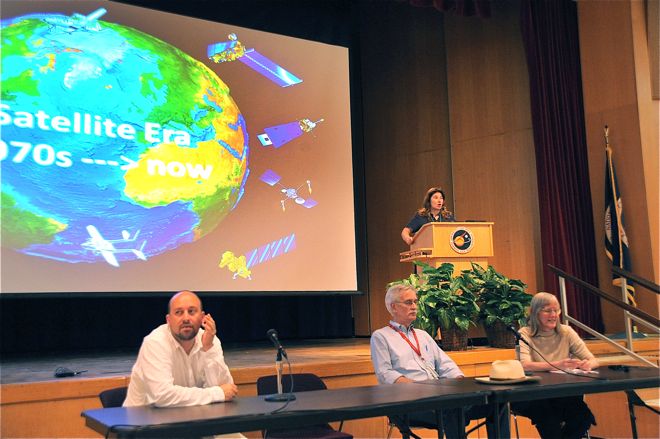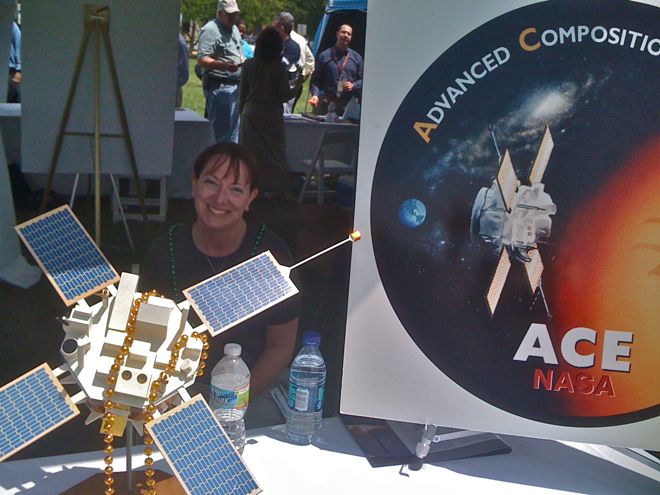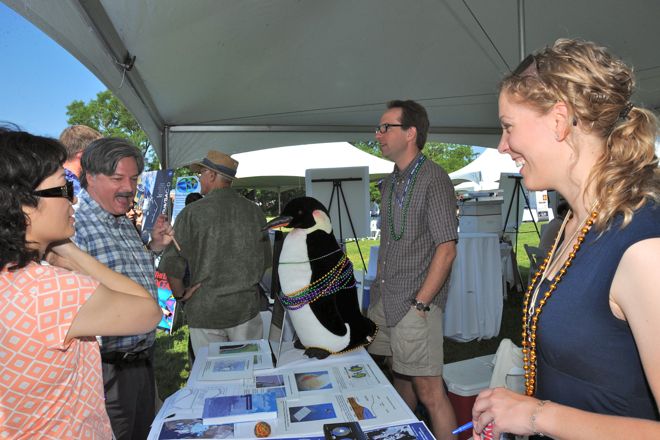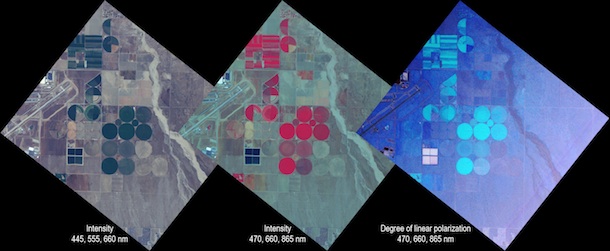
The brightness, or “intensity,” and polarization of reflected light provide different information about the elements that make up a scene, apparent in this set of images collected by the Airborne Multiangle SpectroPolarimetric Imager (AirMSPI) during its maiden flight on Oct. 7, 2010, on the ER-2 over Palmdale, Calif. AirMSPI is one of three prototype polarimeters being tested this month during the Polarimeter Definition Experiment (PODEX).
At left is a “natural color” intensity image created by combining information from the blue (445 nm wavelength), green (555 nm), and red (660 nm) spectral bands. The Palmdale airport, where the NASA ER-2 is based, is visible at left. Square and circular agricultural fields are also apparent.
The middle image also displays intensity, but was created by combining data from the 470, 660, and 865 nm bands. The latter is at a wavelength in the near-infrared, beyond the spectral range that the human eye can see. Because the data in this band are displayed in red, the agricultural fields show up as bright red because vegetation has high reflectance at this wavelength.
The right-hand image uses this same set of spectral bands as the middle picture, but the quantity displayed is the “degree of linear polarization,” or DOLP. When light is unpolarized, the plane of vibration of the light waves is randomly distributed. For completely linearly polarized light, there is a single preferred plane in which the light waves vibrate. In general, light is a mixture of unpolarized and polarized radiation, and DOLP is the proportion of the mixture comprised of polarized light.
The most highly polarized features in the DOLP image are the four square objects below and left of center; these are wastewater treatment ponds associated with the Palmdale Water Reclamation Plant. Although incoming sunlight is unpolarized, reflection by water polarizes the light, which is why polarized sunglasses are useful in reducing glare due to sunglint. The vegetated fields are also somewhat polarizing, because a portion of the light is reflected from the waxy layer at the surface of the leaves. The remainder of the light penetrates into the leaves and is absorbed by pigments such as chlorophyll before escaping, resulting in the green color of the vegetation in the natural color intensity image.
Image Credit: JPL/Caltech, AirMSPI Team
Text is by David Diner of NASA’s Jet Propulsion Laboratory in Pasadena, Calif. Diner is principal investigator of the Airborne Multiangle SpectroPolarimetric Imager (AirMSPI)

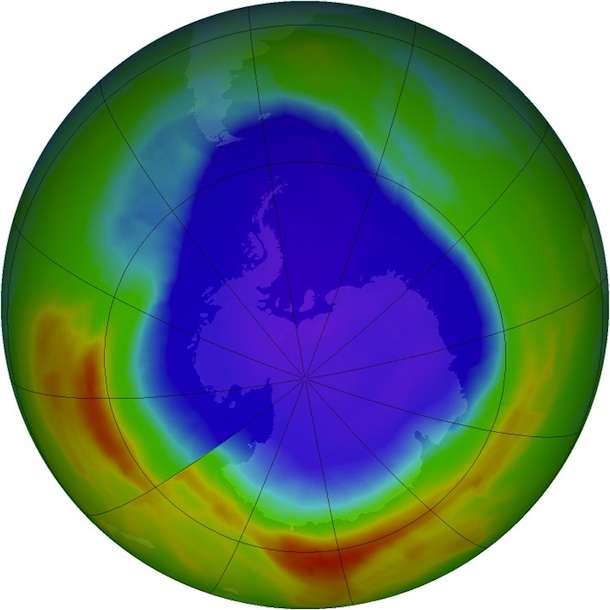
 During the extreme heat waves and droughts of the early 1980s, climatologist James Hansen noticed coincident public discussions about the possible link of extreme events to climate change. He says discussion cooled, however, when natural variability turned up a season with average or cold temperatures. In 1988, another heat wave and drought wiped out crops in the U.S. Midwest, and resulted in more than 5,000 deaths, according to
During the extreme heat waves and droughts of the early 1980s, climatologist James Hansen noticed coincident public discussions about the possible link of extreme events to climate change. He says discussion cooled, however, when natural variability turned up a season with average or cold temperatures. In 1988, another heat wave and drought wiped out crops in the U.S. Midwest, and resulted in more than 5,000 deaths, according to 
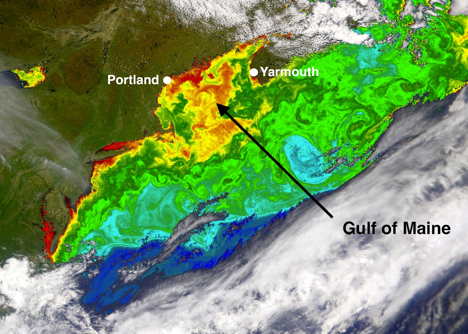

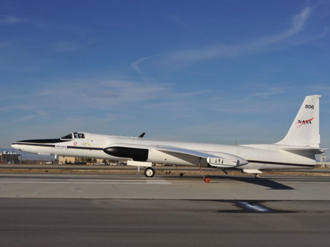

 Fortunately, plenty of information about the behemoth berg, which measured about 820 feet vertically and spanned some 75 miles by 19 miles, was available. Before the breakup, scientists had deployed an instrument package on B15A that included GPS and a seismometer. Later, a separate research group mapped the seafloor topography within the same area. “We knew from breakup that there ought to be something there,” said
Fortunately, plenty of information about the behemoth berg, which measured about 820 feet vertically and spanned some 75 miles by 19 miles, was available. Before the breakup, scientists had deployed an instrument package on B15A that included GPS and a seismometer. Later, a separate research group mapped the seafloor topography within the same area. “We knew from breakup that there ought to be something there,” said 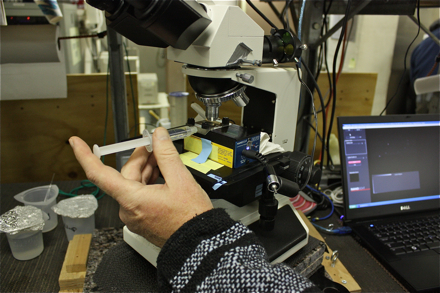
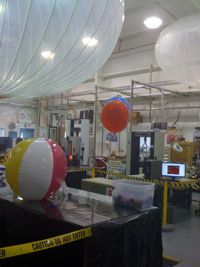
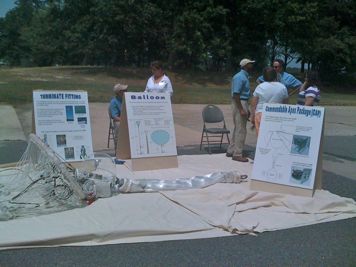
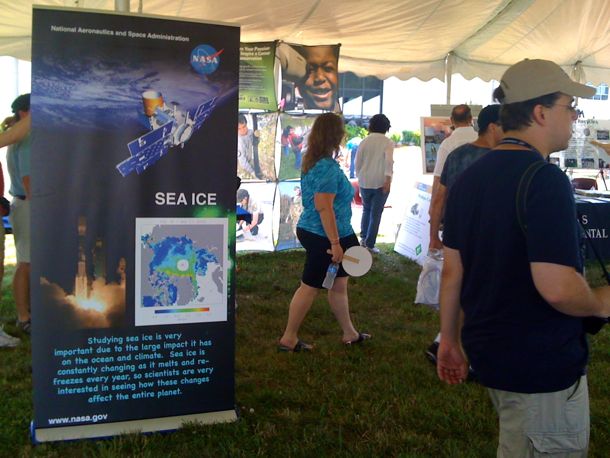
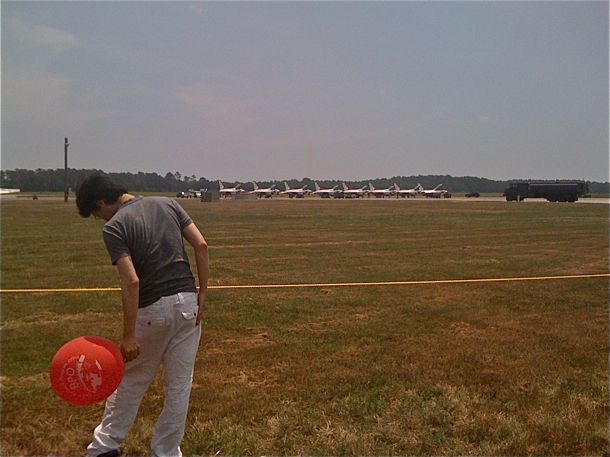
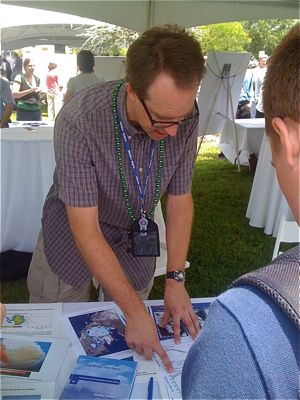 The daily grind of a science and engineering career can leave little time to inquire how colleagues in the very next office have been spending their days and months. Toward remedying that, employees at NASA’s Goddard Space Flight Center emerged from their cubicles and offices on June 2 and mingled outdoors, Cajun style, at the center’s second annual
The daily grind of a science and engineering career can leave little time to inquire how colleagues in the very next office have been spending their days and months. Toward remedying that, employees at NASA’s Goddard Space Flight Center emerged from their cubicles and offices on June 2 and mingled outdoors, Cajun style, at the center’s second annual 